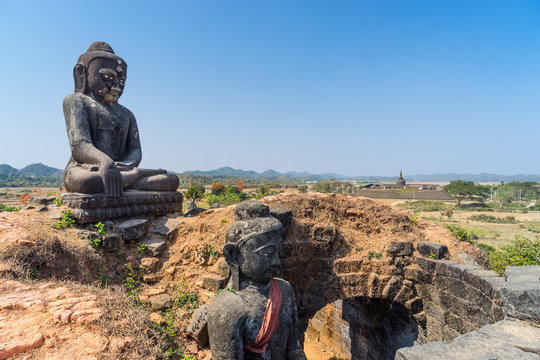
Sittwe
Sittwe, the capital of Rakhine State, situates at the Western part of Myanmar. Sittwe became the trading sea port after the first British annexation to Myanmar. Sea fishing, fish breeding farms, fish produce farms and cold storage factories are the major business of the old bustling city. Nowadays it remains the sea port of Rakhine State.
The city is located on the ample island at the confluence of the Kaladan River, Laymyo River and Mayu River. The west boundary is the Bay of Bengal. Sittwe is serving as a start and end point for visiting the famous ancient city, Mrauk U. Some of the highlights at Sittwe are Buddhist Museum, a modest museum is the bast place in Myanmar to view a good collection of Rakhine style Buddha images and View point, popularly known as point, is the principal attraction and the southern most tip of the city where the Bay of Bengal and the mouth of the Kaladan River meet.
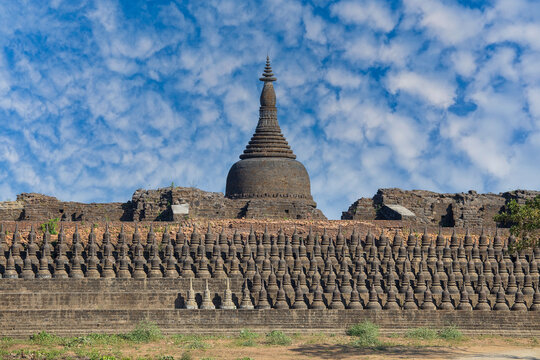
Mrauk U
Mrauk U, an ancient town in northern Rakhine State, was built in 1431 AD by King Min Saw Mon and remained its capital until 1785 AD. It is situated between Kaladan and Lay Mro Rivers and is surrounded by hills in the north and south. Mrauk U can be reached by boat from Sittwe which takes about five hours. It is not merely a plain ground but has many high-rise mounds with rich soil so that paddy is easily grown there.
Within Mrauk U city wall on every mound and every hill dotted with Buddha images, temples ordination hills and pagodas which were all constructed with well fitting cemented sand stones. Note-worthy religious monuments are Shitthaung Pagoda (Temple of 80,000 images) built in 1535 AD. It is the main attraction of Mrauk U. "Htokekanthein" is one of the most famous temples in Mrauk U.
Its name means "Cross-Beam Ordination Hall". Andaw Shrine, in which is enshrined a tooth-relic of Buddha built in 1521 AD. The Ratanabon Pagoda, which signifies of mammals are found in Mrauk U. Famous elephants can be seen at Maru ridge, norht-west of Mrauk U. Varieties of wild animals roar around all over the country side. About 300 species of birds wander in the hills.
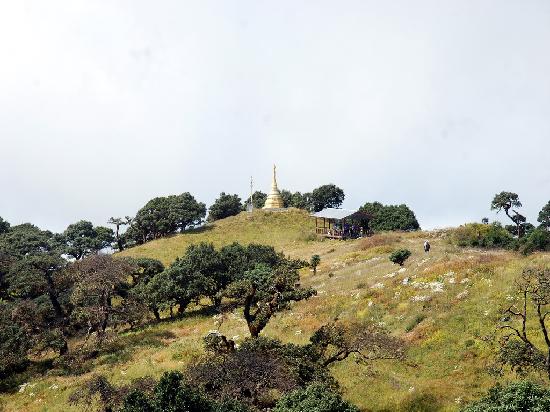
Mt. Victoria (Nat Ma Taung)
Mt. Victoria (10,200 feet elevation) is the third highest mountain in Myanmar located between 21' 24' N and 93' 55' E, within kanpetlet, Mindut and Matupi Townships in Chin State. It is a part of Himalayan Mountain Ranges and located ate the western part of the country, covering 722.61 kilometer.
This is the region of evergreen forest, deciduous forest, pine forest and hill savanna within those over two hundreds bird species are recorded. Moreover different species of reptiles and butterflies are still present. White-browed Nuthatch Sitta Victoria is one of the endemic bird species of Myanmar which can only be found in this area. Mammals such as leopard, wild boar, wild cat, guar, and gibbon are still roaming around. Some rare flowers are found on the summit.
Rhododendron arboretum whit, red and yellow is the famous and mark of Mount Victoria as well as Chin State. Trip to Mt.Victoria offers recreational opportunities as well as viewing of the natural mountain scenery, bird watching and observing the the traditional and cultural heritage of Chin people and their ways of live. Most of the old ladies were thickly painted tattoo on their faces.
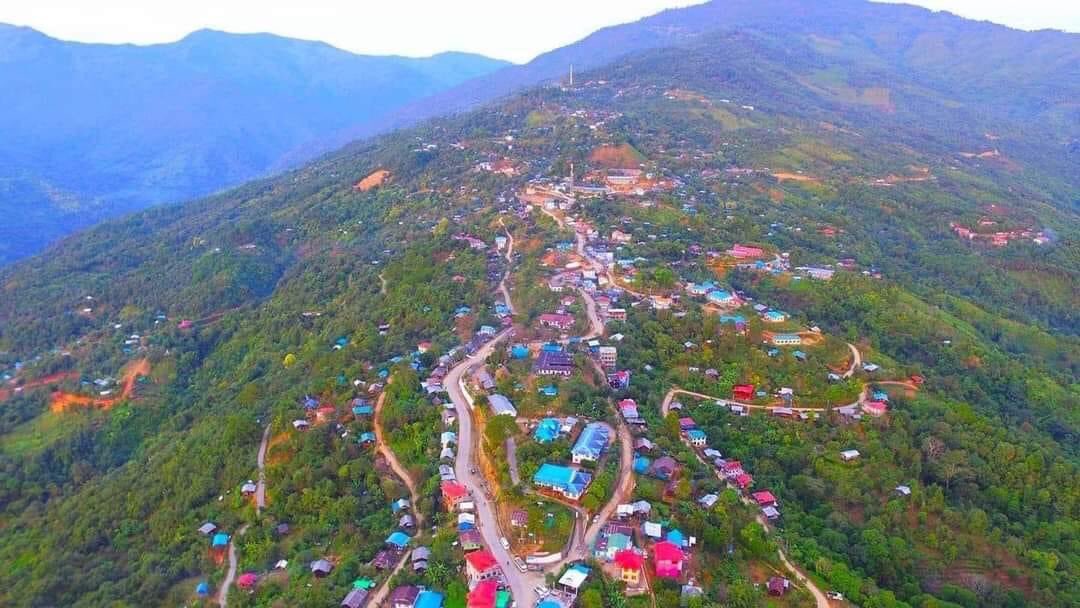
Kanpetlet
Kanpetlet is a small town with a population of a few thousands and situates about 1,370 meters above the sea level at the Southern Chin State. It is 80 kilometers away from Mindat and one of the two gateways to climb the Mr.Victoria. the ascent from Kanpetlet is much easier than comparing with the route from Mindat.
From Kanpetlet, one can drive uup to 2,740 meters of Mt.Victoria where the narrow walkway to the peak start. A moderate trek along the route about one hour will take you to the peak.
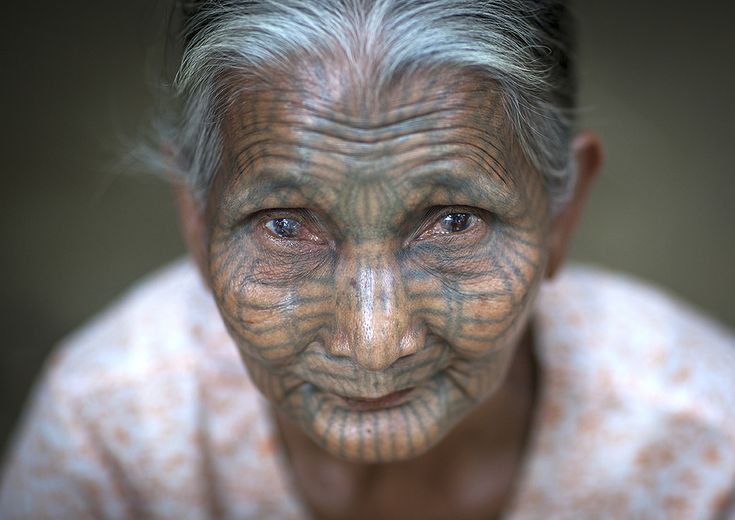
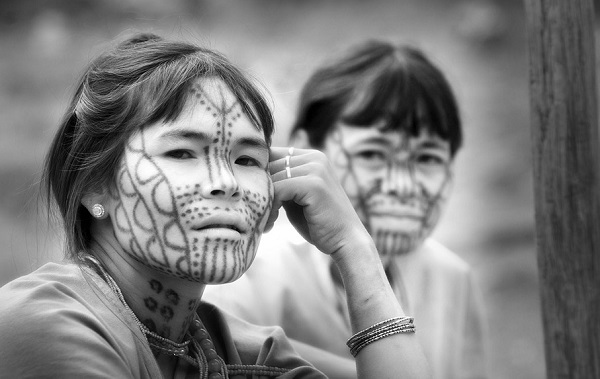
Today, Myanmar still keep many confidential stories surprising tourists, one of which is the custom of tattoo originating from two ancient tribes: Munn Tirbe and Dai Tribe. They live in Victoria Mount, the West of Myanmar until now. If you're keen on exploring unique culture in the world, with tattooed face of tribal women, Myanmar would be a fascinating tourist fascinating tourist destination.
People of Munn Tribe and Dai Tribe think that if women have tattoo on their face, they will be more beautiful and attractive. The more tattoos they have, the more beautiful they are. This shape of thinking makes aesthetic conception of the beauty here. Coming to Victoria Mount, where two tribes live, you will easily see tattooed-face women, but what's the old story of this custom?
There are different interpretation about tattooed women here. In addition to the idea that this is their concept of beauty in these tribes as mentioned above, there is another explanation. In 11th century, Munn and Dai women were too beautiful that they usually caught the eyes of the kings. In order to avoid getting caught by the king's soldiers, they had to tattoo their face to make their appearance worse. Over the years, tattooed face have got familiar to the tribal women and become a symbol of their beauty, endurance and pride. Moreover, if a woman did not have tattoos on her face, it was difficult for her to get married. Although there are conflicting opinions about the stories of the face, tattooed women are still unique features in Myanmar's culture.
From the age of 11 to 15, tribal girls begin tattooing, in some cases, after tattooing their face swell, so they do not dare to go out. The process of tattoos make them very painful. The needles are make of pine, the tattoo ink is taken from some special trees. Some places, the ink is even mixed with resin and buffalo's kidneys to make the ink difficult to fade. Most of the small girls are very scared of tattooing, but they consider it necessary.
The tattoo patterns they choose do not follow any standards and regulations, they just feel nice and like them. Some people have few tattoos, others have tattoos fully covering their face. Each tribes no longer continue this custom due to being banned and severely punished. Only elderly women still have tattoos on their face. The young move to big developed cities and no longer tattoo anymore.
If you set foot in the mountains of Victoria in Western Myanmar, you will have the opportunity to meet tribal women with unique tattoos on the face with cigarette smoking. Furthermore, you will be impressed by the fact that women here really hones, outspoken and friendly. Myanmar is a land of mystery, you might want to discover and learn more about this country, especially the story of the face in mountains.
Kalay (Sagaing Region)
Kalay is a small town in the Sagaing Division to the east of the Chin mountain rages. It is located near the border of Sagaing Division and Chin State (northern part of Chin State) and 132.8 kilometers away from the Myanmar-India border town of Tamu - which was a part of famous land connection Imphal Operation in 1944 during Wold War II.
Because of its strategic location, it is not only serving as a gateway to access northern Chin state but also servicing as an important town on the route of Myanmar-India border trading.
The town was highly depending on the air transport and river transport up to Kalaywa until early 2004 before the newly built Monywa-Yagyi-Kalaywa motor road was fully opened in mid 2004. The 184 kilometers long road with 174 big and small bridges, no doubt, enhances the importance of Kalay.
Tamu (Sagaing Region)
Tamu is a small border town at the Myanmar-India border. It is located at the Kabaw valley of Sagaing Division and connected to Moreh, India, by a bridge crossing over Mathuyar creek.
The town is flourishing steadily after bi-lateral trade agreement signed between Myanmar and India governments in 1994. After a decade later, the newly opened Monywa-Yagyi-Kalalwa motor road significantly shortens the length of traveling from Tamu to Mandalay which reinforces the already flourishing border trading. The town nowadays is not only a place to trade the goods from Myanmar and India but also trade the good from Thailand and China to India and vice versa.